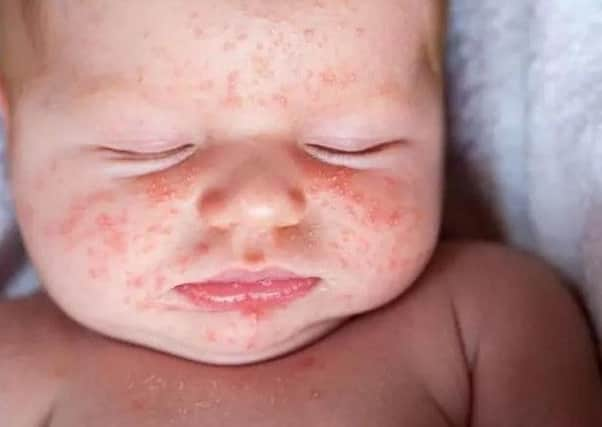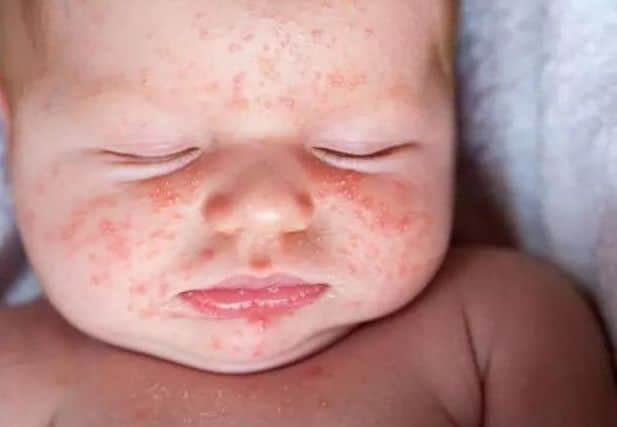Warning for parents as scarlet fever cases hit level 'not seen since 1982'


The highly contagious infection mainly affects young children and is not usually serious if treated.
Official figures from Public Health England (PHE) show there were more than 15,500 cases reported in the first three months of the year - twice as many as last year.
Advertisement
Hide AdAdvertisement
Hide AdThere were 1,624 cases in the most recent week, up to April 1, with a spike of 2,105 cases the week before.


The latest Health Protection Report also showed 11,982 cases of scarlet fever were reported from mid-September to March, compared to an average of 4,480 for the same period over the last five years.
The first signs of scarlet fever can be flu-like symptoms, including a high temperature of 38C or above and swollen neck glands.
A rash, which looks like sunburn and feels like sandpaper, usually appears a few days later.
Advertisement
Hide AdAdvertisement
Hide AdThose thought to have it should contact their GP, as early treatment with antibiotics is important and can help reduce the risk of complications such as pneumonia and the spread of the infection.


Children or adults diagnosed with scarlet fever are advised to stay at home until at least 24 hours after the start of antibiotic treatment to avoid spreading it to others.
Nick Phin, deputy director of National Infection Service at PHE, said: "While it is not uncommon to see a rise in cases of scarlet fever at this time of year, the numbers we have seen this year have not been seen since 1982 when PHE took over responsibility for collecting data on notifiable diseases.
"It is important to be aware that, with treatment, scarlet fever is not usually a serious illness.
Advertisement
Hide AdAdvertisement
Hide Ad"The antibiotics used to treat the infection also reduce the risk of spread to others.
"We are monitoring the situation closely and have worked with NHS Choices to raise awareness of the signs and symptoms of scarlet fever, the importance of good hand hygiene, and also to encourage parents to contact their GP for assessment if they think their child might have scarlet fever."